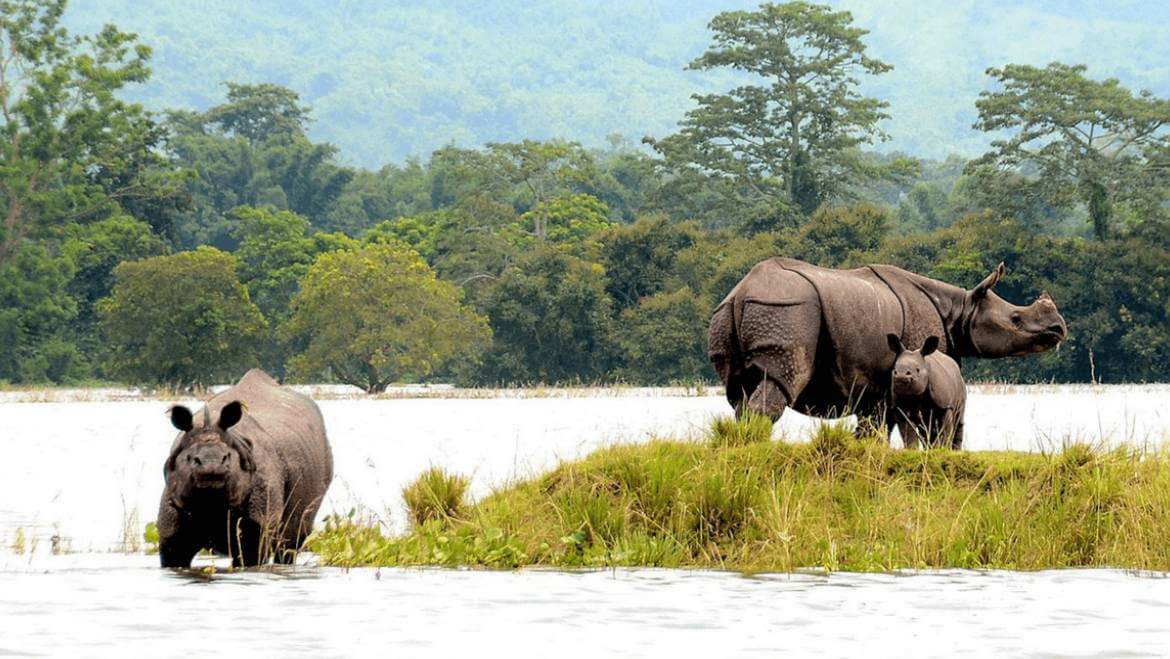Kaziranga National Park is a UNESCO World Heritage Site located in the Indian state of Assam. The park is famous for being home to the world’s largest population of one-horned rhinoceroses, as well as a variety of other wildlife including elephants, tigers, and water buffalo. Trekking in the park is a popular activity that allows visitors to explore the park’s natural beauty and observe its wildlife up close. Here is a detailed trek itinerary and important information for trekking in Kaziranga National Park.
Trek Itinerary:
Day 1: Arrival in Guwahati, transfer to Kaziranga National Park Upon arrival in Guwahati, you will be met by a guide who will take you on a 4-hour drive to Kaziranga National Park. Check-in to your accommodation and spend the rest of the day exploring the park on foot. You can visit the Interpretation Centre, which provides an overview of the park’s history and ecology. Overnight stay in Kaziranga.
Day 2: Jeep Safari in Kaziranga National Park Start your day with a jeep safari in the park, which will take you through the park’s various habitats including grasslands, wetlands, and forests. This will allow you to observe the park’s wildlife including one-horned rhinoceroses, tigers, elephants, and water buffalo. After the safari, you can go for a short trek along the park’s walking trails. Overnight stay in Kaziranga.

Day 3: Trekking in the Panbari Reserve Forest After breakfast, drive to the Panbari Reserve Forest, which is located about 15 km from the park. Begin your trek through the forest, which is home to a variety of wildlife including deer, monkeys, and birds. The trek will take you through dense forests and across streams, and you may even come across some wildlife along the way. Overnight stay in Kaziranga.
Day 4: Trekking in the Karbi Hills Today, you will drive to the nearby Karbi Hills for a full day of trekking. The hills are home to a variety of wildlife including elephants, tigers, and leopards, and the trek will take you through thick forests and across steep hills. The trek is challenging but rewarding, offering stunning views of the surrounding landscape. Overnight stay in Kaziranga.
Day 5: Departure After breakfast, check out of your accommodation and depart for Guwahati. This marks the end of your trekking trip in Kaziranga National Park.
Important Information:
- The best time to visit Kaziranga National Park is from November to April, when the weather is dry and cool.
- Always trek with a guide, as they are knowledgeable about the park’s ecology and can ensure your safety.
- Wear comfortable and sturdy shoes for trekking, and bring plenty of water and snacks for the trek.
- Avoid wearing bright or flashy clothing, as it can startle the park’s wildlife.
- Follow park rules and regulations, including not feeding or approaching the wildlife, and not littering in the park.
- It is important to carry insect repellent as there may be a lot of mosquitoes and other insects in the park.
Book Your Flights : Here 30% OFF on Booking
Book Your Hotels : Here 20% OFF on Booking

0 Comment